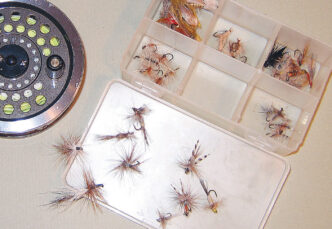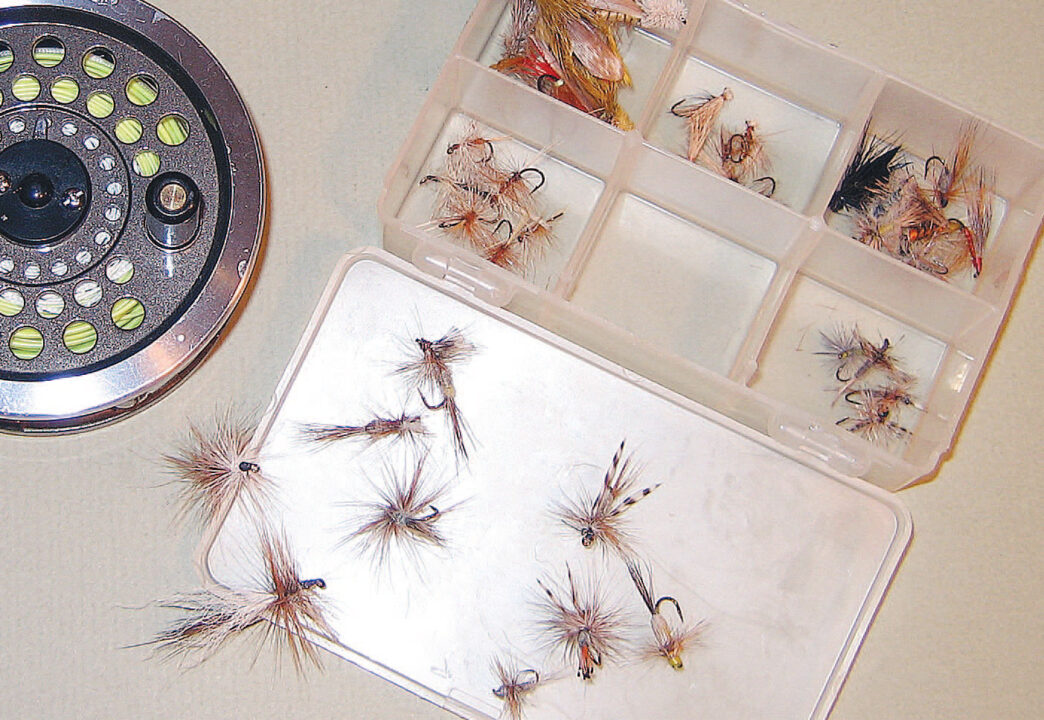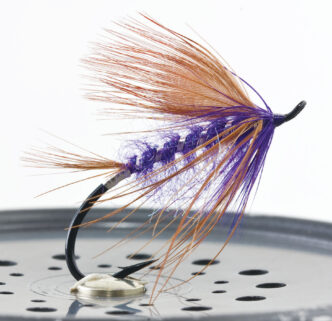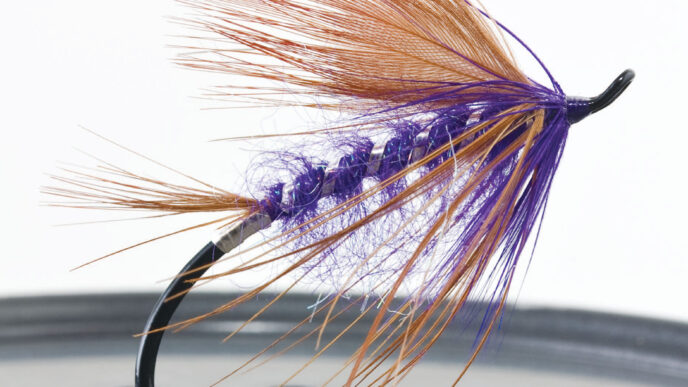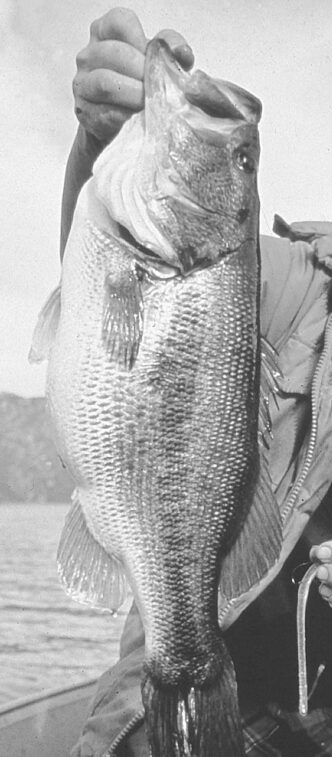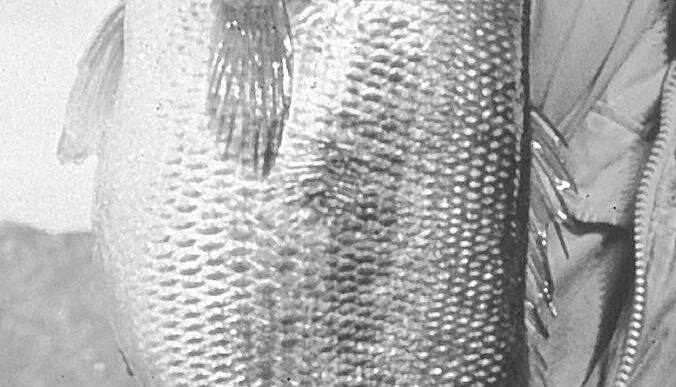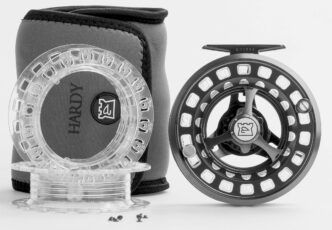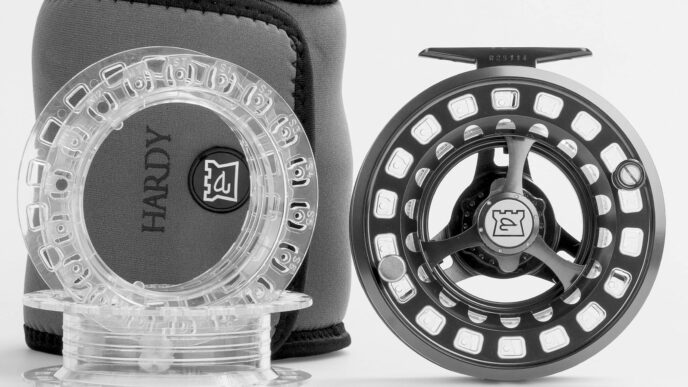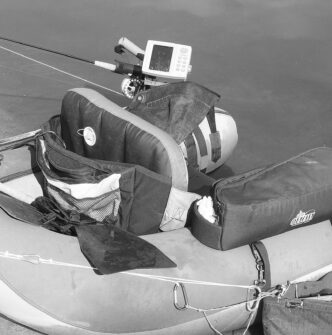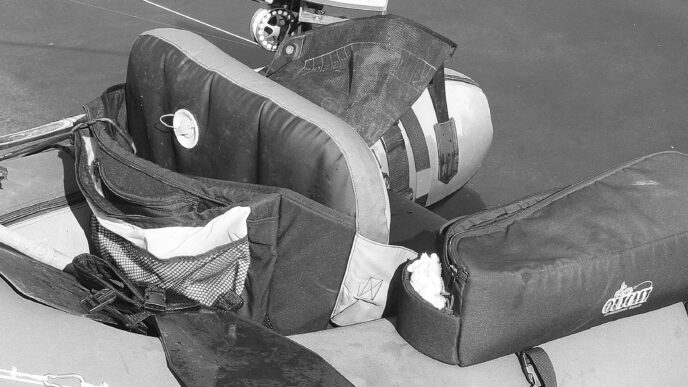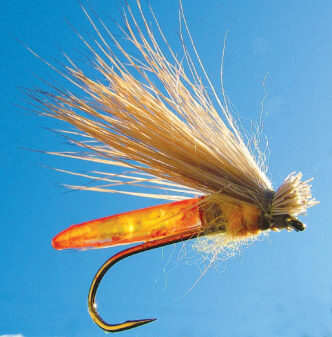Do you have a favorite fly? A go-to, always-seems-to-work fly? I do. At least, I have a fly that’s earned a significant place in my fly boxes, one that draws strikes most of the time, even when I can’t discern anything like a hatch on the small trout streams I fish. That fly is the Adams, or rather, the Adams family of flies. They all stem from the original Adams tied by Leonard Halliday, and they all are a lot prettier than the family of cartoon characters created by Charles Addams.
According to the lore of the Adams fly, it was created by Halliday in 1922. He was tying flies in the small town of Mayfield, 12 miles south of Traverse City, Michigan, when he came up with the new pattern. At a pond outside his tying location was a man named Charles Adams — with one “d” and no relation to the cartoonist. Halliday apparently gave this new fly to Adams, and after Mr. Adams caught a number of trout with it, Halliday called it “the Adams.” (For a more complete history of Leonard Halliday and the Adams dry fly, see a great article by Tom Deschaine on the Hatches website, http://hatchesmagazine.com/blogs/Hatches/2010/04/19/the-adams-history-revisited-by-tom-deschaine.)
I was introduced to the Adams very early in my fly-fishing career. A fellow named Fred Smith taught me how to tie the original version, which uses golden pheasant for the tail. Soon after that, I purchased a copy of The Orvis Index of Fly Patterns, by John Harder. The Adams in this compendium used a mix of grizzly and brown hackle fibers for the tail, instead of the more flamboyant pheasant fibers.
Soon after that, I bought a copy of Western Trout Fly Tying Manual, by Jack Dennis (1980), and discovered his version, called the Bastard Adams, which featured elk hair fibers for extra floatation. I have fished this version more or less consistently for more than 30 years now, and it still works as well as anything else — and it pretty much works anytime, anywhere.
Consider, for example, my experience on a frigid day during a winter long ago. It was snowing lightly when I waded into the cold water of the Owens River gorge in the eastern Sierra. I don’t remember the year, but it was sometime in the late 1960s, probably in February or March, and that portion of the gorge was (and is) open year-round. The upper gorge had a trickle of water escaping from the dam at Lake Crowley. It created a rich tailrace fishery between the dam and the upper power plant in the gorge.
As I found a decent casting spot just below a larger pool in the dense tules that lined both sides of the stream, I spotted a couple of fish rising and a few tiny flies coming off. After catching one of the bugs with my hat, I discovered they were BlueWinged Olives, about size 18. The only thing I had that came close to matching that hatch was a size 18 Adams.
There were more fish rising now, and the hatch was getting thicker by the minute. In about half an hour before the cold forced me out of the water, I caught and released more than 20 brown trout, ranging in size from a nine-incher that took the fly as it dropped to the surface to a fat and healthy brown that came across a beaver pond in a torpedolike rush to snap up a very bedraggled Adams. That fish weighed just over three pounds and was shaped like a football. To say the Adams successfully imitated a Blue-Winged Olive is an understatement.
A month later, on a small stream in the San Bernardino Mountains, I lay on my side on a sandbar and cast to a portion of undercut bank that just looked fishy. I’d been angling for about an hour and had not seen a single fish rising or much in the way of hatching insects. I took two trout in two casts, slicing the air with perhaps six feet of fly line and seven feet of leader. Both were browns, huge for the size of the stream. Almost identical at 11 inches, they slid out from their cut-bank lair and smacked the fly solidly. Another score for the Adams.
That seems to be the story on this versatile dry fly. It will match many naturals, especially early and late in the fishing year, and allow you to pound up some pretty fair fishing on small creeks and streams when there’s not much going on. It will pass for a Blue-Winged Olive, mimic a fair number of caddisflies that have a grayish tone and mottled wings, and apparently can resemble a number of other creatures that flit and flutter over California trout streams. I have fished it in the middle of a fast-breaking mayfly hatch when the flies coming off were tannish in color and during hatches when they were almost white, and I still caught fish. It will work on the sophisticated trout in Hot Creek and catch a ton of bluegills in a rancher’s pond when they ignore a popper or hair bug.
As you would suspect, the original Adams has been modified and retied by almost every angler who has tried it. One of the first modifications has been to the tail. When tyers substituted a mix of grizzly and brown hackle fibers — the same feathers they were using to tie the mottled hackle of the Adams — the fly worked well almost everywhere. Next came the Western Adams, in which the floating ability of the fly was enhanced by substituting elk hair or moose for the tail.
Some tyers have altered the gray body to suit their local needs or whims. Author John Gierach describes an Adams with a tan body for use in the Rockies in Trout Bum, and in Popular Fly Patterns, Terry Hellekson lists a yellow-bodied Adams as a popular modification for California waters. I’ve tried both, and they certainly work on the little streams around the Los Angeles area. I’ve also tied the Adams with a black body and with an olive one. I made an experimental Adams with a peacock herl body. They all have produced hits.
Even more fun is varying the ratio of the grizzly hackle to the brown hackle. With two-to-one grizzly over brown, the fly has more of a gray tone, and with more turns of brown hackle in proportion to grizzly, its overall look is more of a brown shade. You can get some truly buggy-looking flies this way. Experiment for yourself. You’ll find a number of color combinations of the Adams that work.
Other fly tyers and tying methods have created a complete Adams family for the fly angler. Since we are headed into the winter months, with lots of time to tie flies before spring arrives, tying up a bunch of Adams variations could be a smart idea. Listed below are the most common and popular of these. You may find one or more of these patterns to your liking — and to the liking of the fish — or you may work out your own version of this versatile fly.
The Original Adams
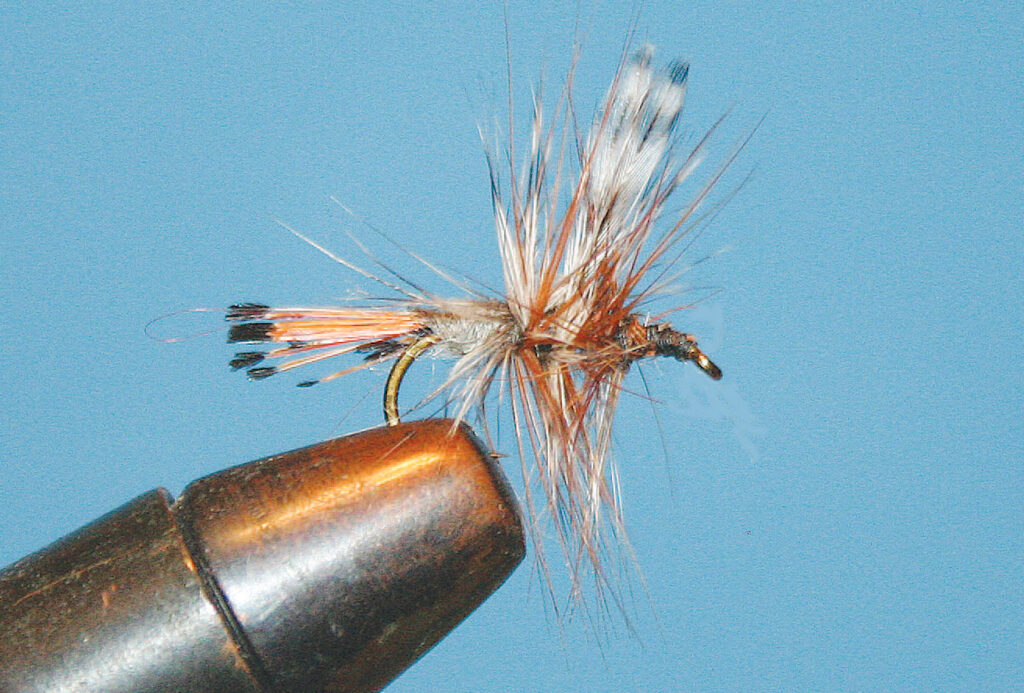
Hook: Dry fly, light wire, size 12 to 20
Thread: Fine gray or black
Wing: Grizzly hackle tips, tied upright and divided. The original may have been tied either spent-wing style or down-wing style, like a caddis pattern.
Tail: Golden pheasant tips
Body: Muskrat fur or medium gray artificial dubbing
Hackle: Brown and grizzly mixed, two turns of each
The Western Adams
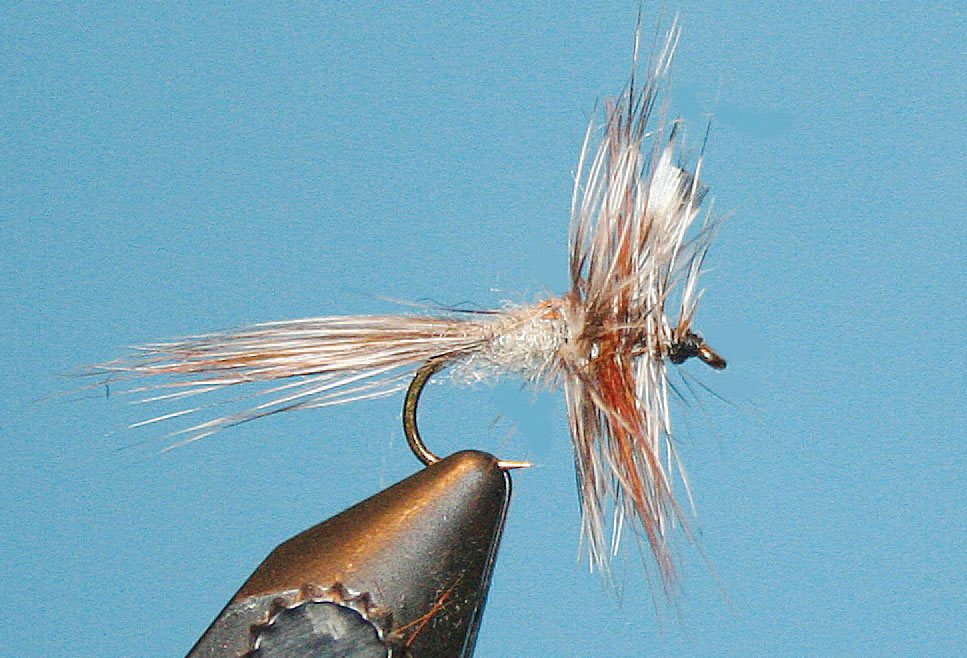
Hook: Dry fly, light wire, size 12 to 20
Thread: Fine gray or black
Wing: Grizzly hackle tips, tied upright and divided
Tail: Elk hair or moose
Body: Muskrat fur or medium gray artificial dubbing
Hackle: Brown and grizzly, mixed
The Female Adams
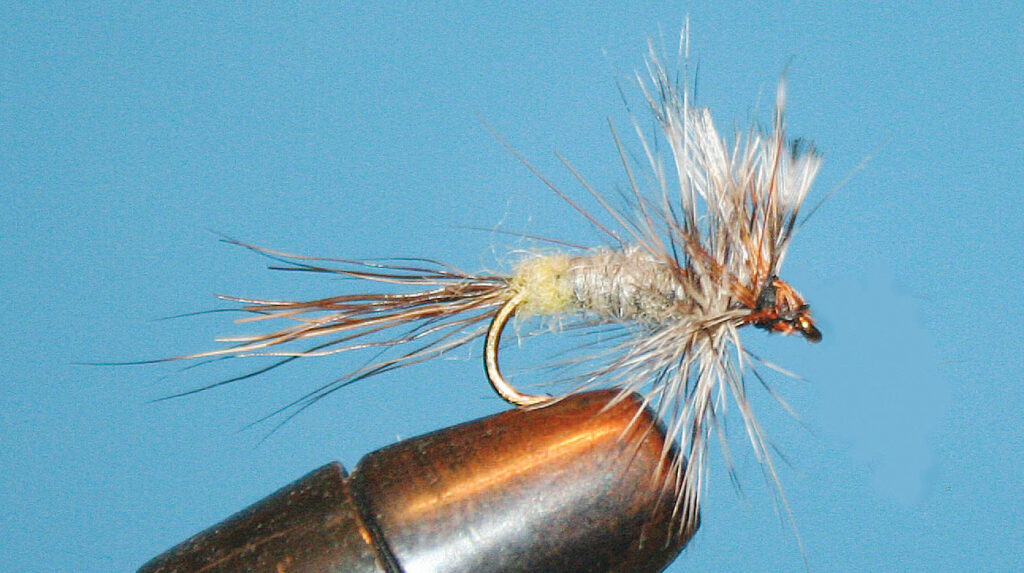
Hook: Dry fly, light wire, size 12 to 20
Thread: Fine gray or black
Wing: Grizzly hackle tips, tied upright and divided
Tail: Mix of grizzly and brown hackle fibers. Substitute elk hair or moose for extra floatation.
Tip: Small tip at rear of body made from yellow dubbing, which imitates an egg sac
Body: Muskrat fur or medium gray dubbing
Hackle: Brown and grizzly, mixed
The Down-Wing Adams
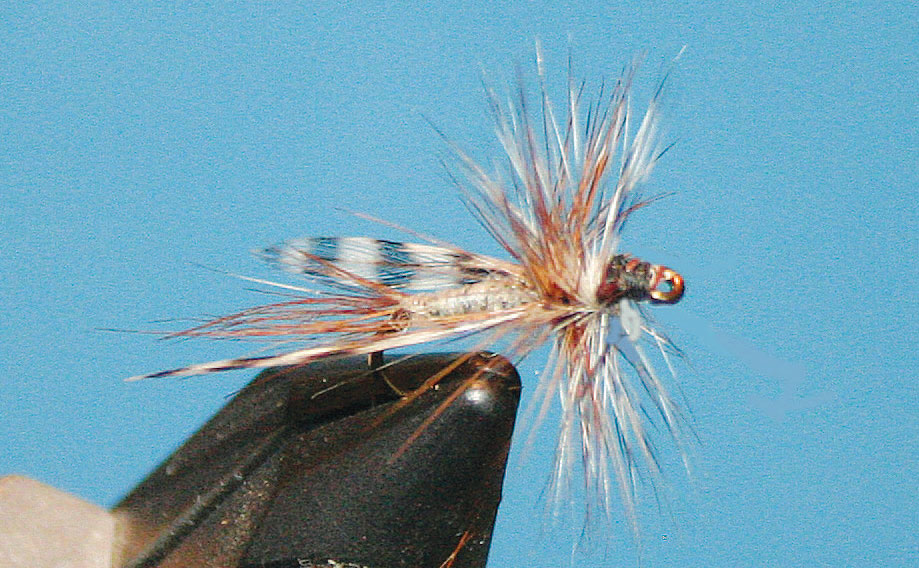
Hook: Dry fly, light wire, size 12 to 20
Thread: Fine gray or black
Tail: Grizzly and brown hackle fibers or moose or elk hair
Wing: Grizzly hackle tips tied in a down-wing position, somewhat similar to a spinner
Body: Muskrat fur or medium gray dubbing.
Hackle: Grizzly and brown, mixed
The Parachute Adams
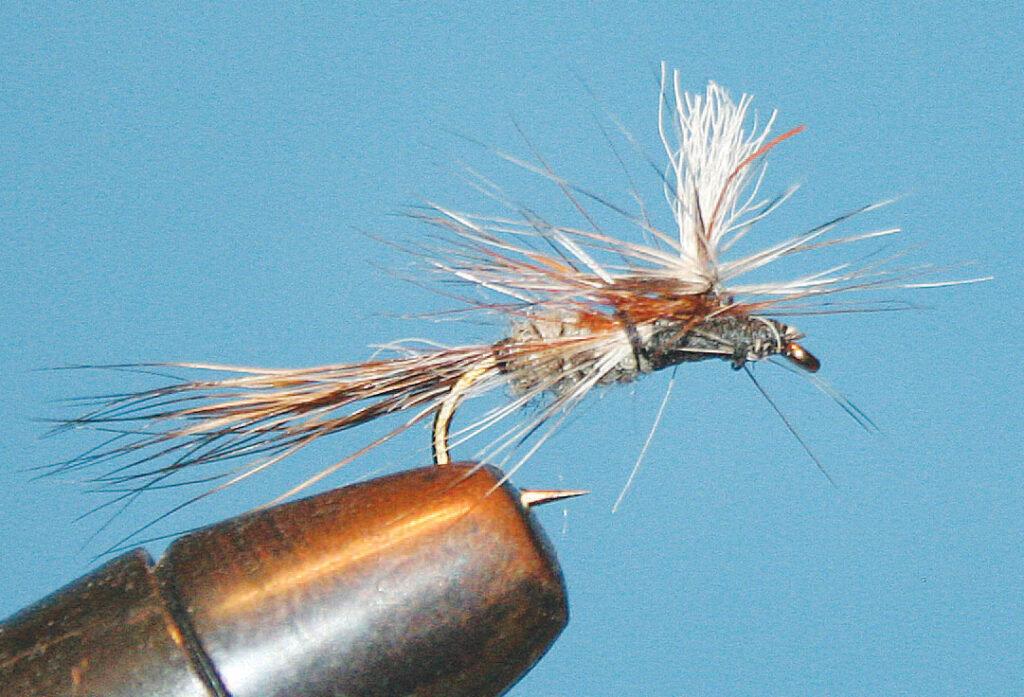
Hook: Dry fly, light wire, size 12 to 20
Thread: Fine gray or black
Wing: White or orange calf tail, or any post material you like. I’ve used foam post material in bright yellow or orange for increased visibility on the water.
Tail: Grizzly and brown hackle fibers.
Body: Muskrat or medium gray dubbing.
Hackle: Grizzly and brown wrapped around upright wing post, parachute style
The Adams Trude
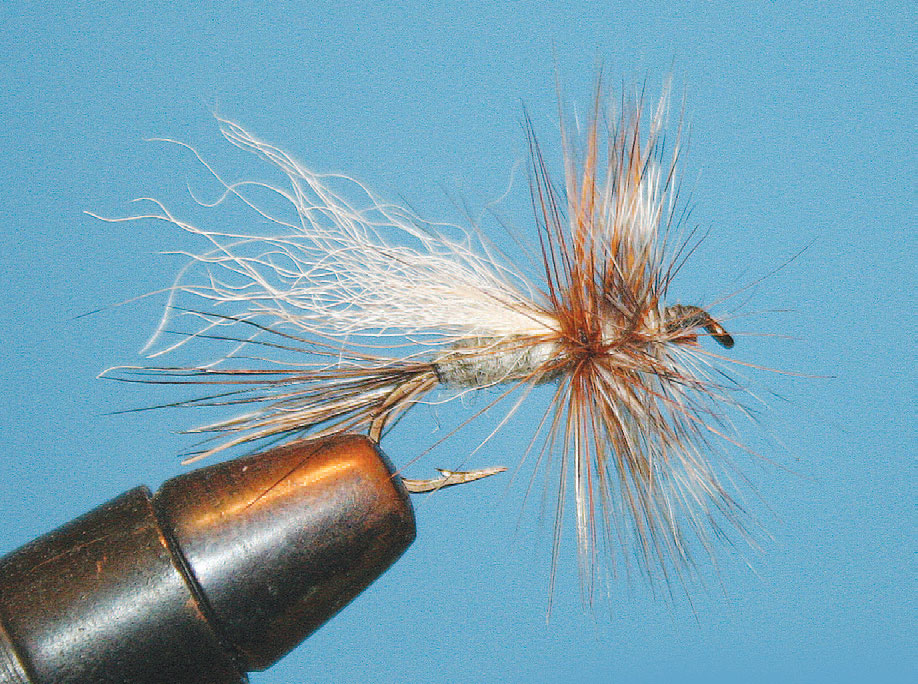
This patterns serves as a caddis imitation and, on larger hooks, as a stonefly imitation.
Hook: Dry fly, light wire, size 12 to 16, 2X long
Thread: Fine black or gray
Tail: Moose or elk hair
Body: Muskrat, medium grey dubbing, or peacock herl
Wing: Calf tail, tied slanting back over the body. White is popular, but other colors, including fluorescent orange, pink, and yellow can be used.
Hackle: Grizzly and brown, mixed, tied bushy
The Adams Humpy
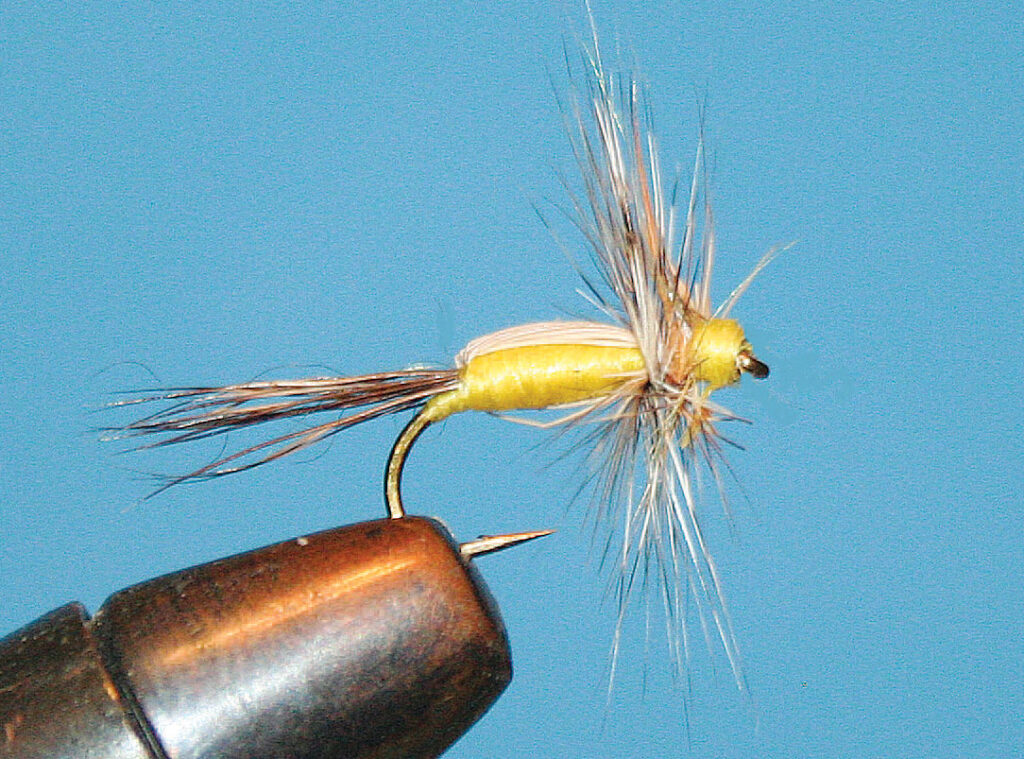
Hook: Dry fly, light wire, size 12 to 20
Thread: The color of the thread is the belly color of the fly. Popular colors include yellow, orange, tan, and green.
Tail: Deer or antelope hair
Body: Thread belly, with overbody of deer or antelope hair
Wing: Deer hair from body, tied upright and divided
Hackle: Brown and grizzly mixed, tied bushy
The Adams Bivisible
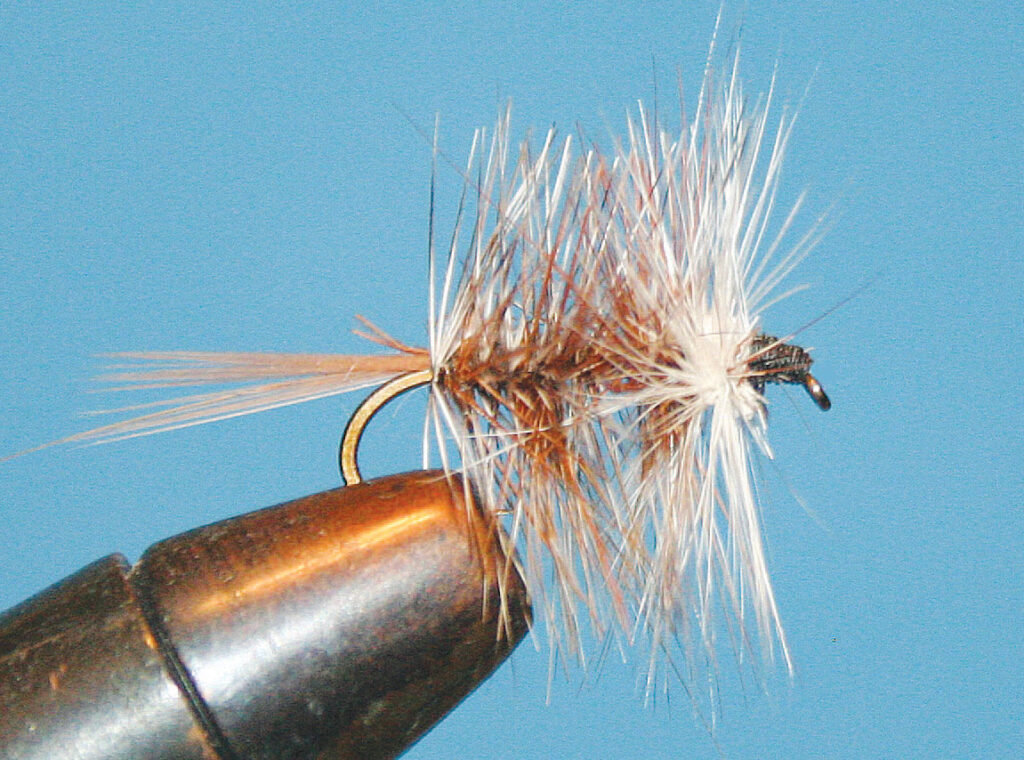
Hook: Dry fly, light wire, size 12 to 16
Thread: Brown or gray
Tail: Brown or ginger hackle fibers (use quality spade hackle, if you can find it)
Wing: None
Body: None
Hackle: Brown and grizzly mixed, palmered up the shank of hook, with white hackle at the front for increased visibility
The Adams Midge (not pictured)
This pattern is similar to the Western Adams.
Hook: Dry fly, light wire, size 18 to 22
Thread: Fine black
Wing: None, or small grizzly hackle tips, tied upright and divided
Tail: Grizzly and brown hackle fibers
Body: Muskrat or medium gray dubbing
Hackle: Grizzly and brown, mixed



